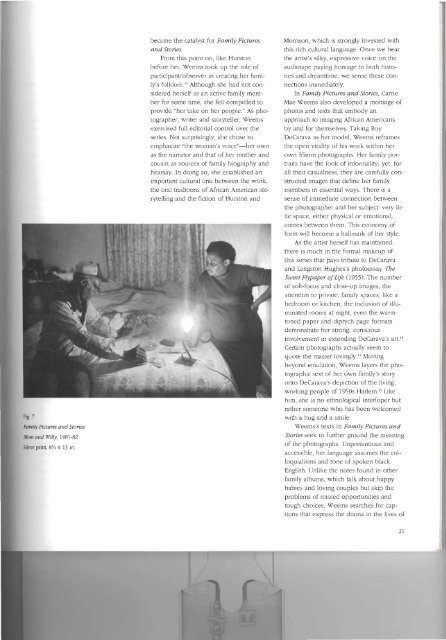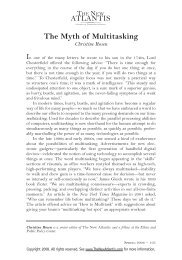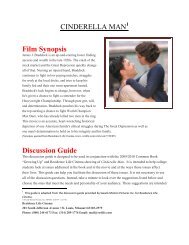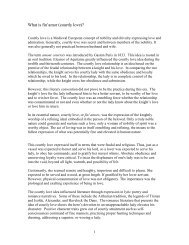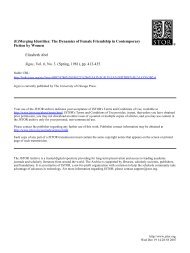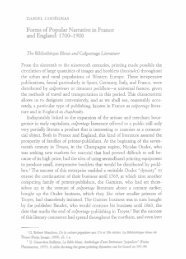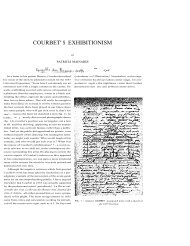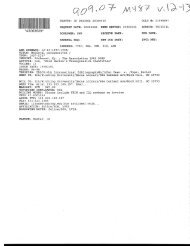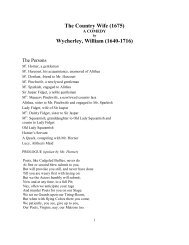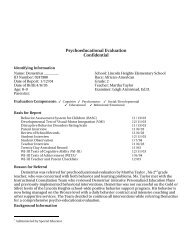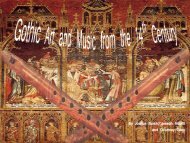CARRIE MAE WEEMS - People Search Directory
CARRIE MAE WEEMS - People Search Directory
CARRIE MAE WEEMS - People Search Directory
You also want an ePaper? Increase the reach of your titles
YUMPU automatically turns print PDFs into web optimized ePapers that Google loves.
Fig. 7<br />
Family PicllIres and Stories<br />
Mom and Willy, 1981-82<br />
Silver print, 8Y, x 13 in.<br />
became the catalyst for Family Pictures<br />
and Stories.<br />
From this point on, like Hurston<br />
before her, Weems took up the role of<br />
participant/observer in creating her family's<br />
folklore." Although she had not considered<br />
herself as an active family member<br />
for some time, she felt compelled to<br />
provide "her take on her people." As photographer,<br />
writer and storyteller, Weems<br />
exercised full editorial control over the<br />
series. Not surprisingly, she chose to<br />
emphasize "the woman's voice"-her own<br />
as the narrator and that of her mother and<br />
cousin as sources of family biography and<br />
hearsay. In doing so, she established an<br />
important cultural link between the work,<br />
the oral traditions of African American storytelling<br />
and the fiction of Hurston and<br />
Morrison, which is strongly invested with<br />
this rich cultural language. Once we hear<br />
the artist's silky, expressive voice on the<br />
audiotape paying homage to both histories<br />
and dreamtime, we sense these connections<br />
immediately.<br />
In Family Pictures and Stories, Carrie<br />
Mae Weems also developed a montage of<br />
photos and texts that embody an<br />
approach to imaging African Americans<br />
by and for themselves. Taking Roy<br />
DeCarava as her model, Weems reframes<br />
the open Vitality of his work within her<br />
own 35mm photographs. Her family portraits<br />
have the look of informality; yet, for<br />
aU their casualness, they are carefully constnlcted<br />
images that define her family<br />
members in essential ways. There is a<br />
sense of immediate connection between<br />
the photographer and her subject: very little<br />
space, either physical or emotional,<br />
comes between them This economy of<br />
form will become a hallmark of her style.<br />
As the artist herself has maintained,<br />
there is much in the formal makeup of<br />
this series that pays tribute to DeCarava<br />
and Langston Hughes's photoessay The<br />
Sweet Flypaper ofLife (1955) The number<br />
of soft-focus and close-up images; the<br />
attention to private, family spaces, like a<br />
bedroom or kitchen: the inclusion of illuminated<br />
rooms at night; even the warmtoned<br />
paper and diptych page formats<br />
demonstrate her strong, conscious<br />
involvement in extending DeCarava's art."<br />
Certain photographs actually seem to<br />
quote the master lovingly." Moving<br />
beyond emulation, Weems layers the photographic<br />
text of her own family's story<br />
onto DeCarava's depiction of the living,<br />
working people of 1950s Harlem." Like<br />
him, she is no ethnological interloper but<br />
rather someone who has been welcomed<br />
with a hug and a smile.<br />
Weems's texts in Family Pictures and<br />
Stories seek to further ground the meaning<br />
of the photographs. Unpretentious and<br />
accessible, her Janguage assumes the colloquialisms<br />
and tone of spoken black<br />
English. Unlike the notes found in other<br />
family albums, which taJk about happy<br />
babies and loving couples but skip the<br />
problems of missed opportunities and<br />
tough choices, Weems searches for captions<br />
that express the drama in the lives of<br />
21


